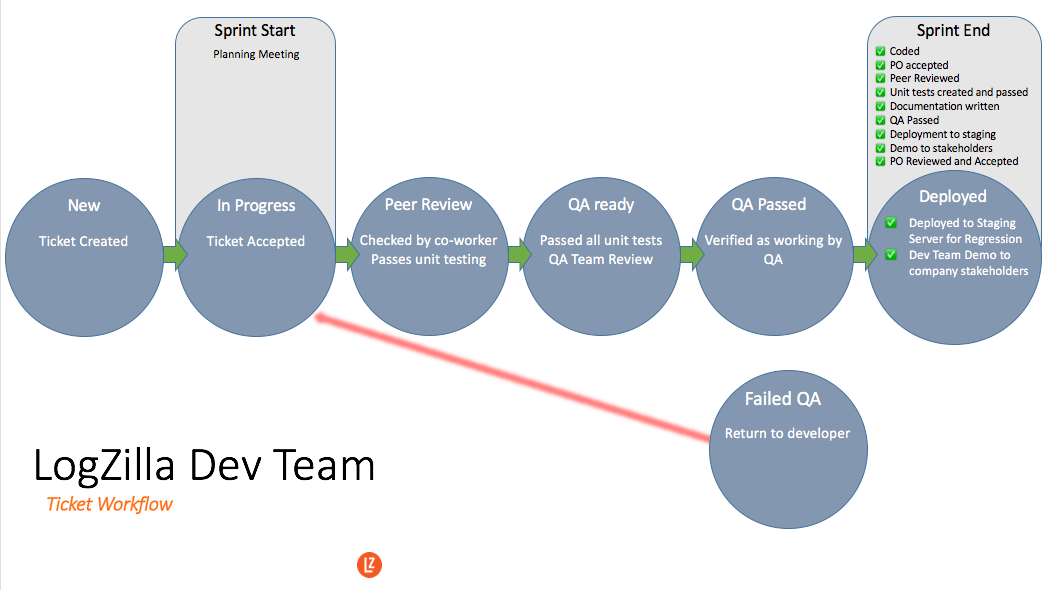Development Lifecycle
Release Timing
New versions of LogZilla are released to the public on a regular basis. An alert will be displayed in the UI when new versions are available. Our development team follows a process known as Scrum so that we may bring new features and fixes to you at a much faster pace.
LogZilla software releases are performed from three "branches", corresponding to "stages" of the development process (those three stages are listed as branches just below). Releases from these three branches have their own version numbering schemes. stable releases come from the master branch and are in the form vx.y.z (such as v6.16.0) indicating a "concluded" state. staging releases come from the staging branch and are in the form vx.y.z-rcA (such as v6.16.0-rc2) indicating a "release candidate" state. unstable releases come from the development branch and are in the form of vx.y.z-devA (such asv6.16.0-dev3), indicating they are still in a "development" state.
Development Lifecycle
Our development cycle for a ticket lasts 6 weeks from start to end. This is because there are 3 stages that an enhancement or bugfix must pass before being released:
- Development Branch
- Staging Branch
- Master Branch
Development Branch (unstable release)
Developers work locally on their own workstations to write and test the code on their own systems. Once they feel it is ready, they will push their changes to a separate branch in the code repository which is associated with the ticket number they are working on - at which time, the ticket is marked for Peer Review.
Once the ticket is reviewed by one of their peers and passes, the code is then merged into the Development branch of our repository and marked as QA ready. The QA team checks the work on the development branch (which is automatically installed on a test server) to make sure everything looks good.
At the end of each sprint, the associated work done on each ticket is demonstrated to the entire company by the developer who wrote the code. For example, if one of our UI developers writes a new feature to "send email", then he or she would then demonstrate that function during a company meeting held at the end of the sprint.
Staging Branch (staging release)
Once the code has passed QA and been demonstrated to the company stakeholders, it is then pushed to our staging branch (and deployed to a staging test server). At this time, the QA team checks the software for regression bugs. Meaning that they test LogZilla to find out if the introduction of the new code has broken any of the old code.
Master Branch (stable release)
After passing regression testing, the Staging branch is then merged to the Master branch and uploaded to our repository server for public accessibility.
It is at this time that users will see the work done which started 6 weeks prior.
Some users prefer to use staging or even development versions of LogZilla so that they get the latest updates even faster. Generally speaking, this is fine (we have only had 1 regression bug since we started). Instructions on how to switch branches can be found in Upgrading Logzilla.
